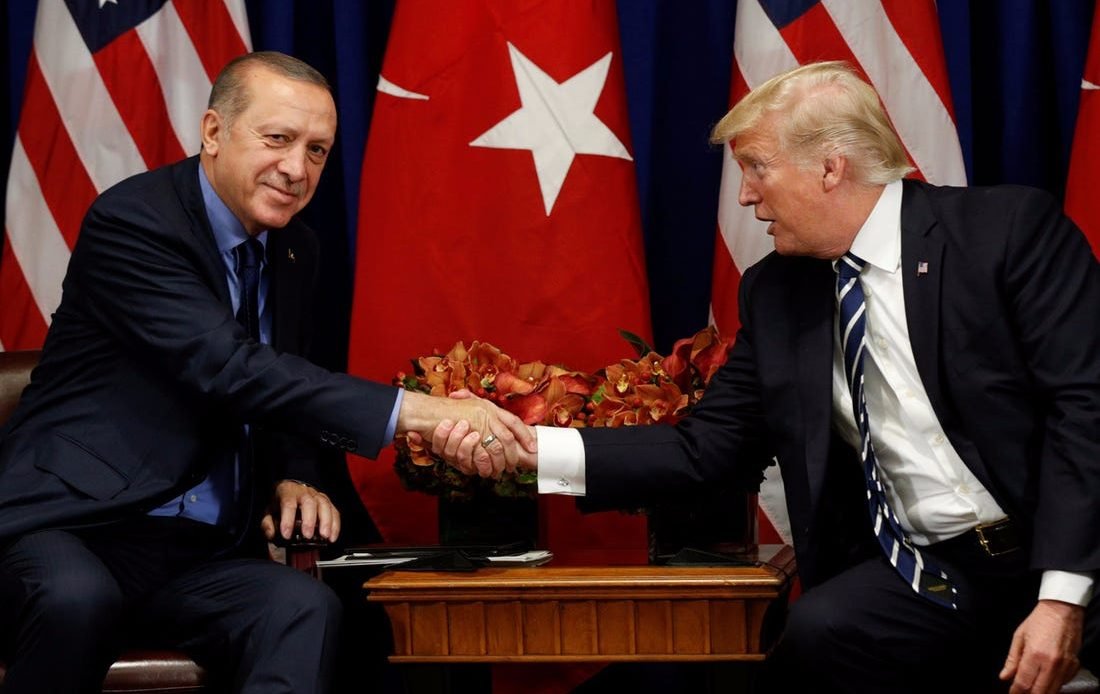Steven Sahiounie, political commentator
It is reported by numerous sources that the ISIS leader Abu Bakr al-Baghdadi is dead, after CIA investigations uncovered his location in Barisha, in the northwest of Syria. 1st Special Forces Operational Detachment-Delta, aka Delta Force, entered the secluded rural compound which is surrounded by natural limestone caves. The attack involved about 6 helicopters, 2 of which landed and carried out the mission and recovered evidence, and finally flew away, but not before executing an airstrike to destroy the place Baghdadi was reportedly killed at.
Reports suggest that Baghdadi was accompanied by family members, some of whom may be dead as well. It is reported that he detonated a suicide vest upon discovery and that his wives may have done so as well. Reportedly, Baghdadi was in the area, which sits south of the Turkish border, and lies between Jisr al-Shugur and the city of Idlib, to escape to Turkey. A senior Iraqi security official told The Associated Press that Iraqi intelligence played a part in the operation.
Idlib is the last area in Syria to be held by armed terrorists following the political ideology of Radical Islam. Idlib province is occupied by many armed groups, but are all variations on the Al Qaeda theme. The terrorists of Idlib are supported by Turkey officially, and the civilian population is supplied by international charities. The Syrian government and its ally Russia have been trying to clear Idlib of armed terrorists, to free the unarmed civilians held there as human shields, but this process has been slow-going as it faced severe criticism from the US, NATO, EU, and Turkey.
Baghdadi had previously been reported to have been in the Bou Kamal area, on the Syrian-Iraqi border; however, that international check-point is now administrated by both the Syrian government and the Iraqis. This meant Baghdadi had to be moved carefully by his protectors. The northeast section of Syria would have been too risky for him to hide, as it was recently turned into a conflict-zone, with Turkish backed mercenaries, originally from Idlib, who were battling Syrian Kurds who had set up a ‘homeland’ they called Rojava, and are considered terrorists by Turkey.
Since Turkey is the sole backer of the terrorists in Idlib, it would have been easy to coordinate a move to a secluded rural area in Idlib for Baghdadi, as the route would have been securely in the hands of Turkey.
On Oct 17th, Vice President Pence, and Secretary of State Pompeo met in Ankara with President Erdogan. Trump had sent the pair to achieve a cease-fire between Turkey and the Kurds, who had been formerly US military allies on the fight to defeat ISIS. Trump was facing domestic and international criticism after his decision to pull out US troops from the northeast of Syria, effectively paving the way for the military invasion of Syria by Erdogan.
The meeting ended successfully, and it appears a swap may have been on the table, in which Erdogan was to give up the location of, and the protection of Baghdadi, in exchange for the continuing US support of the Erdogan plans to rid his border area of Kurds and to re-settle Syrian refugees there. Trump needed a domestic win, as his impeachment investigation rages, with daily scandals and accusations filling the media and the hearts and minds of the voting public. Erdogan needed to push ahead with his ‘Operation Peace Spring’ without being threatened with US sanctions and economic devastation.
Baghdadi and ISIS became notorious when in August 2014 they swept through a dusty area in Iraq and killed 3,000 to 5,000 people, while some were buried alive, and captured 3,000 Yazidi women as sexual slaves.
The beginning of the end of ISIS started in October 2015 when the Russian military arrived at the request of the Syrian government. Russia began airstrikes on the ISIS oil smuggling business which consisted of daily tanker truck convoys from the Syrian oil fields to Turkey. Bilal Erdogan, the son of the President of Turkey, was tasked to handle the ISIS oil trade through Turkey and the reselling of the oil abroad in Europe. Once Russia started their airstrikes attacking the tankers the business eventually was ruined.
About 90 percent of the Islamic State’s foreign fighters traversed Turkey, and had Erdogan sought to control his border, ISIS would never have seized the territory it did. Even Trump recognized that Turkey refused to be a partner against ISIS, and this was one factor that caused the US military to partner with the Kurds.
Erdogan had an Islamic education in Turkey and follows the Muslim Brotherhood, instead of traditional Turkish Islam. As his power grew, he has pushed his Salafi vision to change Turkish society. Erdogan sees Turkey as the leader of the Islamic world and has emboldened the Diyanet, which is the state institution for Islam that has come under scrutiny by European security services for posing a possible threat due to clerics preaching Radical Islam in Turkish supported mosques there.
In the shifting sands of the Middle East region, we see the former main exporter of Radical Islam, Saudi Arabia, to start a new path while Erdogan is seeking to fill their sandals.



